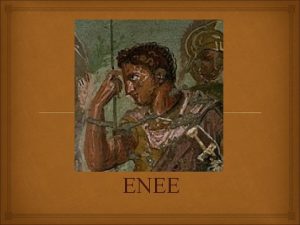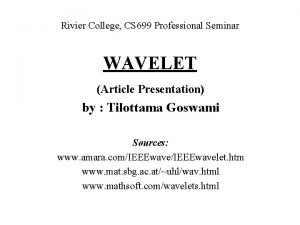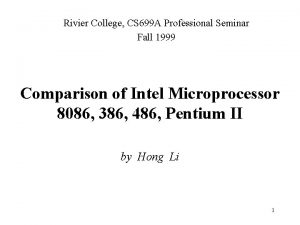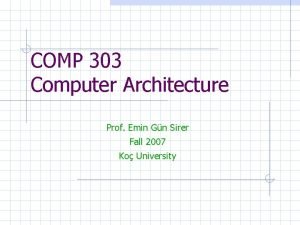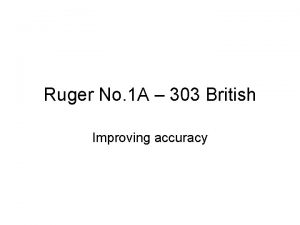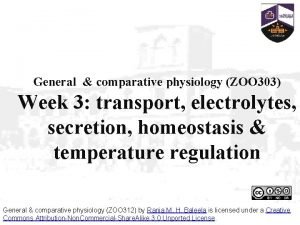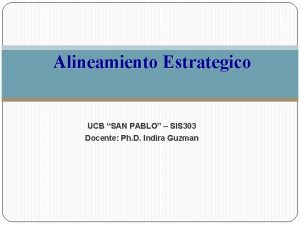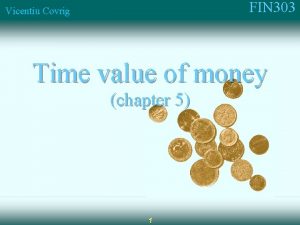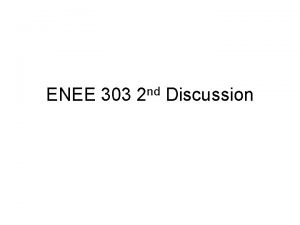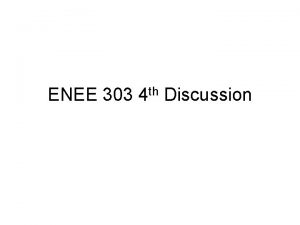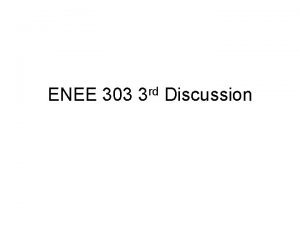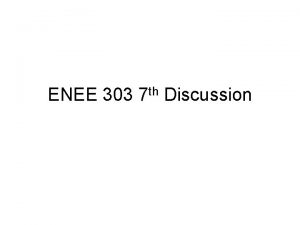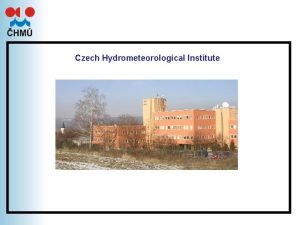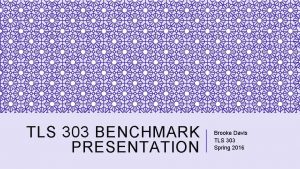ENEE 303 1 st Discussion SelfIntroduction Name Yusen


















- Slides: 18

ENEE 303 1 st Discussion

Self-Introduction • Name: Yusen Fan • Email: ysfan@umd. edu • Office Hour: Tuesdays 10 -12 @ AVW 1143

Contents • Pspice demonstration • Diode, BJT overview

Pspice • Tutorial: https: //engineering. purdue. edu/~ee 255/lec turesupp_files/PSpice-Tutorial. pdf

Pspice diode and transistor models • Can be found on the course website • e. g. – PSpice diode model for 1 N 4007 – PSpice models for BJT 2 N 390 x transistors

Diode Bipolar Junction Transistors ENEE 303 Fall 2016

Current-Voltage Relationship of a pn-Junction

Example 4. 2: Multiple Diodes

Small-Signal Model • Q: How is small-signal resistance rd defined? • (Slope at the Q point) – A: From steady-state current (ID) and thermal voltage (VT) as below. • Note this approximation is only valid for smallsignal voltages vd < 5 m. V.

Small-Signal Model • Consider the circuit shown above for the case in which R = 10 k. Ohm. • The power supply V+ has a dc value of 10 V over which is superimposed a 60 Hz sinusoid of 1 V peak amplitude (known as the supply ripple) – Q: Calculate both amplitude of the sine-wave signal observed across the diode. • A: vd. (peak) = 2. 68 m. V • Assume diode to have 0. 7 V drop at 1 m. A current.

BJT Bipolar Junction Transistors ENEE 303 Fall 2016


• common-emitter current gain (b. ) – is influenced by two factors: – width of base region (W) – relative doping of base emitter regions (NA/ND) • High Value of b – thin base (small W in nano-meters) – lightly doped base / heavily doped emitter (small NA/ND)

• All current which enters transistor must leave. • When combined with equations from the previous slides

i. C – v. BE Characteristic for an npn Transistor

Operation regions of BJT 1. Active mode: BE forward biased, CB reverse biased 2. Saturation mode: BE, CB are both forward biased 3. Cut off mode: BE, CB reverse biased

Models for the Operation of the npn BJT in Various Modes npn transistor active mode cutoff mode saturation mode

Example 6. 3 Find VBB to achieve, a) active mode with VCE = 5 V Assume VBE = 0. 7 V and b = 50. a)
 Griffin 3.hk.yusen
Griffin 3.hk.yusen Fils d'enée
Fils d'enée Tilottama goswami
Tilottama goswami Intel college
Intel college Aim of simple distillation
Aim of simple distillation 38cfr3.303
38cfr3.303 Vir 303
Vir 303 Emin gun sirer
Emin gun sirer Ruger no 1 accuracy improvement
Ruger no 1 accuracy improvement Zool 303
Zool 303 Sis-303
Sis-303 Fin 303
Fin 303 Kravis theory
Kravis theory Eco 303
Eco 303 Dywizjon 303 klp
Dywizjon 303 klp 3 6 9 12 15 18 21 24 27 30
3 6 9 12 15 18 21 24 27 30 Life orientation grade 7 term 2 activities
Life orientation grade 7 term 2 activities Uib290
Uib290 Www.coloradoui.gov.myuiemployer
Www.coloradoui.gov.myuiemployer

